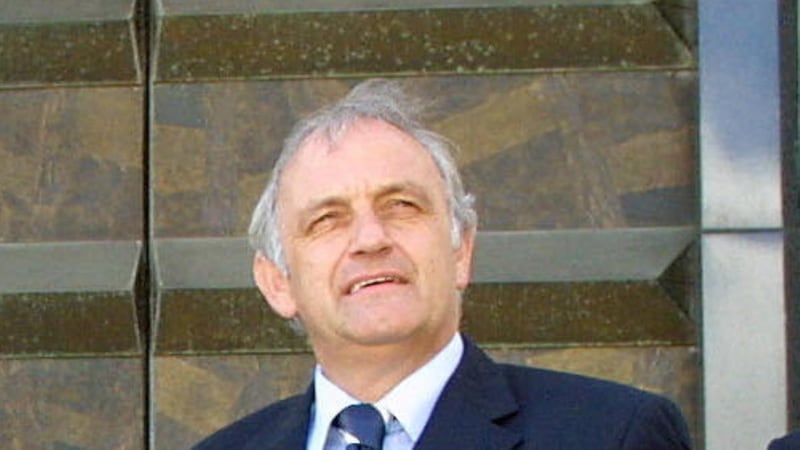Belgium come to Dublin without many of their star players as boss Roberto Martinez uses this international window to explore the depth in his panel ahead of the World Cup in Qatar later this year.
The last time the sides met Ireland were on the wrong side of a 3-0 defeat at Euro 2016, but this game offers an interesting opportunity for Stephen Kenny to test the notable progressions of his team against a high-calibre side – despite the fact that Belgium are not bringing Thibaut Courtois, Jan Vertonghen, Kevin de Bruyne, Eden Hazard, Dries Mertens, Romelu Lukaku and the other players who have acquired more than 50 caps.
But look who they are bringing to the Aviva.
Considering Youri Tielemans, Leander Dendoncker, Thorgan Hazard, Leandro Trossard, Christian Benteke, Michy Batshuayi and Divock Origi are available behind the players who are not travelling, coupled with the fact that Belgium are ranked number one in world, Belgium are a fascinating case study.
They have never won a World Cup or European Championships, with their third-place finish in Russia in 2018 their best return after finishing runners-up at the Euros in 1980. They reached the semi-final at Mexico '86, only denied a final against West Germany by Diego Maradona's two goals in 12 magnificent minutes.
So they have almost always operated from a higher base than Irish football, even considering our runs to the knockout stages of the 1990, 1994 and 2002 World Cup finals.
Belgium football's watershed moment happened in the late 1990s after successive "failures" by the international team. With a population of about 11 million, there was a feeling that things could be better and in 2001, when Michel Sablon began his work as director of football, few, including him, could have imagined it would take Belgium from 50th in the world to number one.

Sablon was a key member of the technical study group I worked with during the Arab Cup in December and I found him to be a considered, meticulous thinker about the game. His vision was about aligning people at all levels of the game to create a nationwide workforce that was collective in its ambition to develop a football legacy that everyone could be part of.
Imagine that becoming a reality in Irish football?
So often, different stakeholders in the game are siloed as each cohort works separately from the other towards their own goals. But what if there was a technical vision for football in this country that everyone could contribute to, rather than rowing against?
Imagine a vision that would encourage stakeholders to compete with each other on the field of play during match-time, but work collectively together off it, delivering and demanding a standard of excellence for their own vital part of the football pyramid.
When players and coaches enter their tier, they take the baton to develop them and ensure that when they are ready to move to the next level, that the baton goes smoothly knowing a big contribution to the overall legacy piece has been delivered.
National movement
It may sound idealistic but the dream of any young kid who loves the game is to play for their country or for any coach, it’s to work for their country.
We see this in the desire of Premier League players such as Jeff Hendrick at Newcastle United, who appears to have prioritised his international career by going on loan to QPR where he can secure more game time in the Championship (not to mention the bonus of walking into a club where the first team coach John Eustace doubles as your international trainer).
Sablon delivered a curriculum to schools, grassroots clubs, underage academies with most people buying in. The aligned thinking created a national movement that needed every tier to deliver on its mandate within the vision.
Coaches were educated on how to deliver Sablon’s curriculum and it resulted in every cohort understanding what was needed from them, so they could focus on being champions of their piece of the pie.
It took time to settle and for things to embed but, slowly and surely, as each tier started to implement the vision, the pieces of the jigsaw started to connect.
At the time in Belgium, they had a small professional football league across two divisions (compared to their neighbours in Germany and France) and while Ireland is still working towards having a professional football industry at the top level of the game here, there is an appetite for and progress towards that.
Sablon’s processes and vision focused on the individual’s progress. It became about developing technical, tactical, mental, physical and decision-making processes, all in an aligned way.
It was all about creating a conveyer belt of talent development that relied on all tiers to deliver.
Since 2001, Belgium have produced a golden generation and while almost all of them now play in the world’s top leagues, there is no denying where they were made.
With impressive work and results regarding player development already starting to become evident here, imagine what could be possible if we could align everyone in Irish football?
The FAI’s soon-to-be-announced technical director faces that task. The Sablon methodology cannot be copied and pasted by Irish football, nor can the Dutch or any other nation’s philosophy.
The best lesson to be taken from Belgium was their unity – all across the board from grassroots to schools and academies in the professional clubs – and how it allowed them to use Sablon’s vision as a foundation stone.
Imagine that.
















